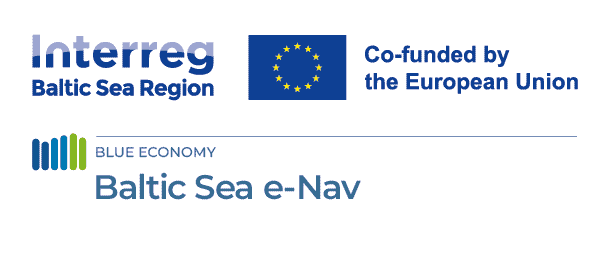Seminar: Smart Maritime Future in Baltic Sea Region
Project: Baltic Sea e-Nav
Virtual Meeting & Physical Meeting
03. December 2025

A successful rollout of the new e-navigation era requires a seamless and coherent user experience across borders. To meet this need, hydrographic offices, meteorological institutes, academia, and maritime technology providers around the Baltic Sea have joined forces to launch the Baltic Sea e-Nav project.
The project is dedicated to modernizing digital navigation tools and aligning them with the latest international standards, enabling national authorities and maritime organizations to ensure safer, more harmonized, and eco-efficient navigation in the Baltic Sea region. The aim is not only to improve navigation itself but also to enhance efficiency, safety, and sustainability, contributing to a greener maritime sector.
At the heart of the project is transnational cooperation, ensuring that these new tools are available across the region, regardless of individual countries’ current levels of readiness. This cooperation directly supports the goals of the EU Strategy for the Baltic Sea Region (EUSBSR), particularly in advancing a sustainable blue economy.
As part of the harmonisation effort, prototype products will be piloted and tested by active mariners in simulated environments. The feedback collected will guide further product development, ensuring real-world applicability and user acceptance. This process ensures that navigators will experience no disruption or inconsistency when crossing borders.
The outcome will be the launch of the Baltic Sea e-Nav base package, a collection of next-generation S-100 compliant navigational products, which will include:
This base package will serve as a foundation for producers to expand coverage across their areas of responsibility. In parallel, a dissemination toolkit will support hydrographic offices in informing end-users such as onboard officers and shipowners.
Beyond the project's timeline, the partnership will continue improving and expanding the navigation tools through strong international governance and collaboration. Through these efforts, Baltic Sea e-Nav aims to make the region a global model for safe, efficient, and environmentally conscious maritime navigation.
What is the S-100 Standard?
As digital navigation becomes more widely adopted, the volume of maritime data is rapidly increasing. This growth highlights the need for standardized data formats that can be easily shared and integrated across systems and borders. The S-100 standard addresses this need.
Also known as the Universal Hydrographic Data Model, S-100 is a hydrographic geospatial data framework developed by the International Hydrographic Organization (IHO). It supports a wide range of next-generation digital products and will eventually replace many of today’s legacy standards, including the widely used S-57.
IHO Roadmap for the S-100 Implementation Decade (2020–2030)
This roadmap reflects the IHO’s structured and gradual approach, giving producers, authorities, and end-users time to adapt and fully benefit from the capabilities of the S-100 framework.
Project: Baltic Sea e-Nav
Virtual Meeting & Physical Meeting
03. December 2025
Project: Baltic Sea e-Nav
Physical Meeting
17. September 2025
Project: Baltic Sea e-Nav
Physical Meeting
21. - 23. May 2025
Project: Baltic Sea e-Nav
Physical Meeting
29. - 30. October 2024
Project: Baltic Sea e-Nav
Physical Meeting
30. - 31. May 2024
00:00 - 23:59 (BST)
Interactive map showing pilot locations. Use the arrow keys to move the map view and the zoom controls to zoom in or out. Press the Tab key to navigate between markers. Press Enter or click a marker to view pilot project details.